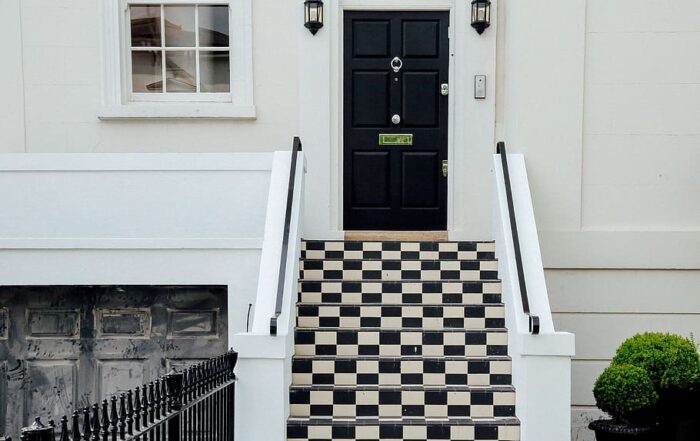
What do you need from your smart TV?
Date Posted:
October 26, 2022
Share This:
Choices, choices, choices — small or large, major or minor, you’ve got to make tons of them.
Luckily, one of the more fun decisions you can make in this life is choosing the perfect smart TV. Even then, smart tech is advancing at light speed, so you’ve got choices … so many choices.
What To Look for when buying a smart tv?
Since folks fiddled with wire antennas to get good reception, we’ve found thousands of ways to make our favorite entertainment as engaging as possible. Tech wizards add smart TV features and options daily. And so the options — and your choices — keep piling up.
But even fun choices can lead to brain static. Scroll through the smart TV selection on your default shopping site. Screen size, shape, clarity, functions — the options are seemingly endless, and what should be a blast can suddenly feel like drowning in data.
Let’s break through that brain static and look at what type of smart TV you might need per your go-to pastime. Smart TVs are great at multitasking, of course, but some options will definitely suit you better than others.
So, are you a casual streamer, a movie buff, a gaming fiend, a sports nut or just on the lookout for a sleek screen that fits your style?
We’ll give you the rundown on what to look for according to your niche.
[Related: Smart Home Systems: Where to Begin?]
Smart TV Tips
Before we dive into what you might need in a smart TV, let’s check some specs. Here’s what most modern smart TVs should come with, so be on the lookout as you browse:
- Networking and internet connectivity. This is essential in any smart TV — it’s how you’ll search, find and view your faves.
- Streaming device compatibility. A smart TV should have built-in ports for streaming devices — think Apple TV, Roku or Amazon Fire TV Stick. These devices are reliable, and streaming companies frequently update them with the freshest features.
- Easy usability. High-definition multimedia interface (HDMI) capability allows you to connect devices and audiovisual (AV) functions without hassle.
- Voice recognition and voice assistant integration. What makes a smart TV system even better? It’s the ability to use your voice assistant to search, select and connect with other smart tech.
As you scope your selections, you’ll run across some terms over and over again. Let’s define them real quick so you won’t feel like you’re swimming in acronyms:
- HD — high-definition. This is standard in smart TVs. An HD TV displays crisp, clear images.
- UHD — ultra high-definition. A UHD TV is an HD TV with greatly enhanced clarity.
- LCD — liquid crystal display. LCD tech basically works by blocking rather than projecting light.
- LED — light-emitting diode. This is a type of LCD tech. LED tech backlights images for a more realistic look.
- OLED — organic light-emitting diode. This tech has carbon (an organic material) that produces light through LED crystals. OLED tech differs radically from LCD tech.
- QLED — quantum light-emitting diode. The newest of the bunch, QLED tech strikes a chord between OLED and LCD.
- 4K — four times the pixels. OK, that’s a rough description. In a nutshell, 4K TVs have four times more pixels than traditional HD TVs.
- 8K — eight times the pixels. Yep, you guessed it. With an 8K TV, take the number of pixels in a 4K HD TV and then double it.
It’s all a bit overwhelming. An AV consultant can walk you through your options — or choose wisely for you according to your needs and budget.
Smart TV Specifics: Something for Everyone
Before you dream up your perfect smart TV system, you have other choices to make. Here are just a few questions to ask:
- Do you want a flat or a curved screen?
- Which size of screen best suits your viewing needs?
- What brightness, clarity and sound levels do you want?
- How can you reach your AV goals without breaking the bank?
Pro tip: Shelling out a big chunk of money (say, for an 8K TV) may or may not be worth it. That depends on your situation. Don’t feel pressured to drop a couple grand when much less will do the trick.
Most of those answers depend on your style, funds and preferences. Of course, an AV consultant will definitely help, and an AV company can take care of the actual installation.
So, what’s your style?
[Related: What to Look for in AV Installation Companies]
The Streamer
Are you a binge-watcher? If you use smart TVs primarily for streaming, your greatest requirement is a fast internet connection with rock-solid networking. The speed you need can vary wildly, depending on your smart TV’s definition, the number of smart devices you use and your location.
As a general rule, having 5 to 7 megabytes per second (Mbps) is fine for standard-definition TVs. But when you’re using HD smart TVs, getting 25 Mbps is a sound choice. Factors like screen size and resolution really depend on your preference, but bigger is (usually) better if your living space allows.
To make the experience seamless, make sure your smart TV has voice recognition and integration with voice assistants, like Alexa or Siri. That way, you can stroll from the living room to the bathroom, flick on your TV in mirror and lounge without missing the drama.
[Related: TV in Your Mirror: What It Is and How It Works]
The Movie Lover
When you’re a cinephile, you’ll want the full home theater experience. That means razor-sharp clarity, booming sound and fast internet.
We recommend an immersive, high-performance audio system that really plants you in the moment. If you don’t have that type of cash, a high-quality sound bar amplifies the AV experience.
Size-wise, a 55-inch to 75-inch screen with a 16:9 aspect ratio should perfectly accommodate your favorite flicks. Many movie buffs love curved TV screens for their wide field of vision and sense of depth.
Add blackout curtains, spacious seating and snacks, and you’ve created your own private viewing cinema.
[Related: Home Movie Theater Ideas: Your Ultimate Guide]
The Gamer
When you’re in the heat of the moment, the last thing you want is a blip in your internet speed. If you’re a die-hard gamer, high-speed internet is your number-one priority — no lags allowed.
For a riveting view, opt for large screens in 4K. Some gamers swear by OLED and QLED TVs, but most agree 4K is a must. In terms of size, the minimum is a 43-inch screen, although others swear by 55-inch smart TVs.
To intensify the experience, try using dual smart TV screens. Like for movie lovers, curved screens can lend a sense of being inside the game. Of course, make sure your smart TV has HDMI capabilities — you want to be able to easily connect a keyboard, controller or other gaming device.
And don’t forget the sound! A soundbar, surround-sound speaker set or high-performance audio system will put you right in the action. AV consultants will know precisely how to place them for 360-degree immersion.
[Related: Why You Should Work With a Contractor and Architect Early on in Your AV Project]
The Sports Enthusiast
Need to catch every second of the action? The sports fanatic’s smart TV requires many of the same features as the cinephile’s … but don’t tell them we said that.
Lightning-fast internet speeds ensure you don’t miss a single play, and high-performance audio sits you right in the stands.
But screens are where you’ll really want to pay attention.
Multiview mode and dual screens truly lend that stadium feel. Keep your eyes on the field on one screen and check running commentary on another. With dual viewing, you can do both — and much more.
Either curved or flat screens work great, and the general consensus is that you’ll need a 55-inch OLED or 4K screen (minimum).
You can even take the game outdoors and watch while tossing the ball around yourself.
[Related: 7 Upgrades to Transform Your Outdoor Entertainment Center]
The Aesthetically Conscious Viewer
Do you want the perks of smart TVs without the stark presentation? Check out various sizes and shapes that integrate with your home’s decor.
But what about a smart TV as art? Smart frame TVs are just that — and many double as mirrors when you’d prefer a more subtle look. Most frame TVs are whisper-thin 4K QLED TVs, so you can slip into any other viewing mode when needed.
Some smart TVs offer a gallery mode that changes the screen from run-of-the-mill TV to art — anything from still paintings to mesmerizing slideshows.
Or maybe you’re the modernist type. Consider creating a grid of smart TVs that network to present one image in multiple frames. Pretentious? Only if you want it to be.
With thoughtful installation, you can bask in entertainment rather than have it rush at you (we’re looking at you, gamer). To take the mood to the next level, a connected multi-room music system lets you take the vibe throughout the house.
[Related: Design Considerations for Incorporating AV Into Your Home]
Contact AV Smart Solutions for Your Smart TV Needs — No Matter What They Are
Ultimately, you know what you want and what your budget allows. When you’re ready to embrace or expand that smart home haven, we’re here to help at AV Smart Solutions.
With expertise in the residential, restaurant, hospitality and office sectors, we know how to create your smart TV nirvana. We offer AV system packages for simplicity as well as customized systems for unique needs.
We’ll also advise you on smart TV placement, equipment, pricing and all the details while providing ongoing tech support. After all, these are fun choices — let’s make sure they stay that way!
Call us at (425) 655-5052, or fill out our inquiry form. One of our AV specialists will be back in touch in a snap.
Featured image via Unsplash


